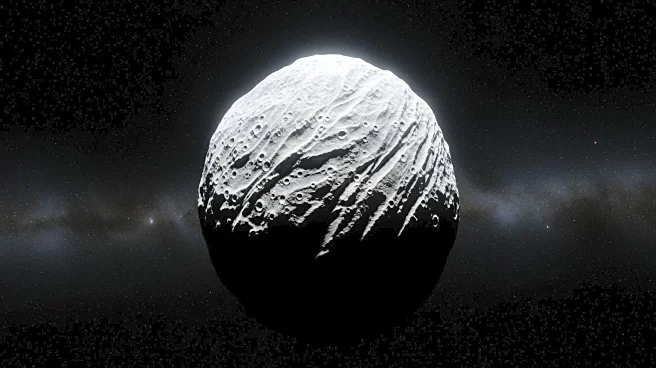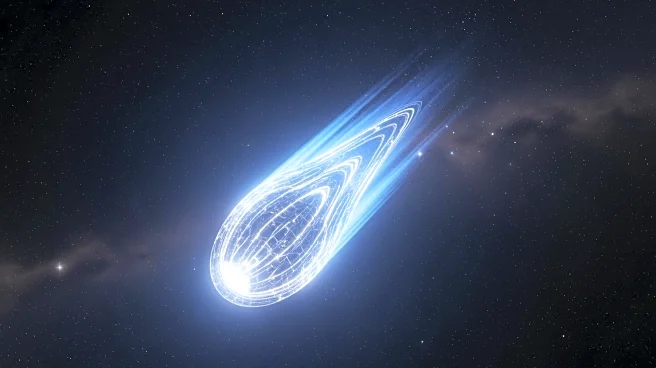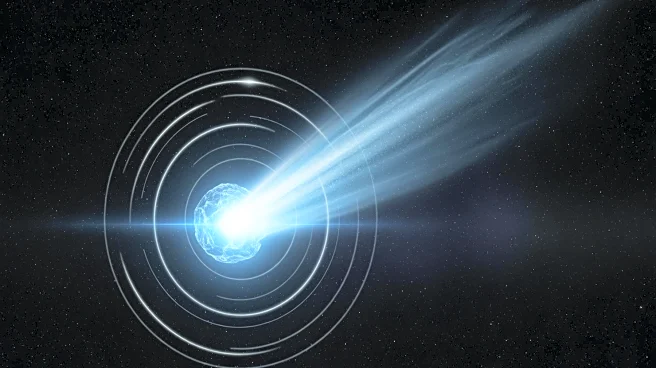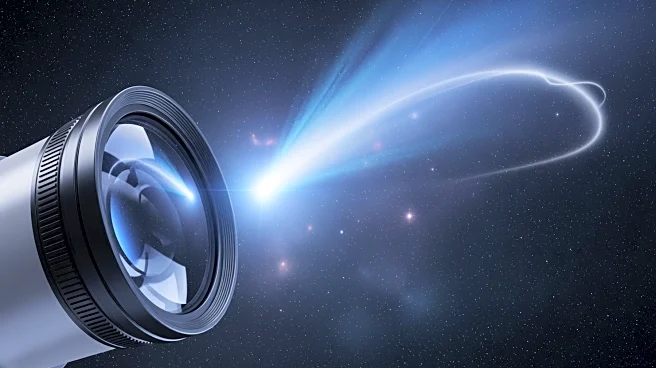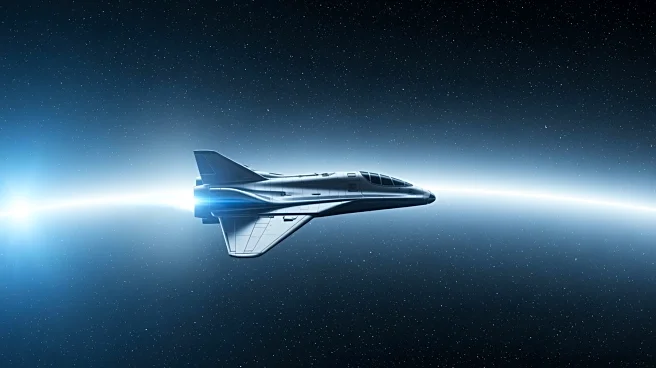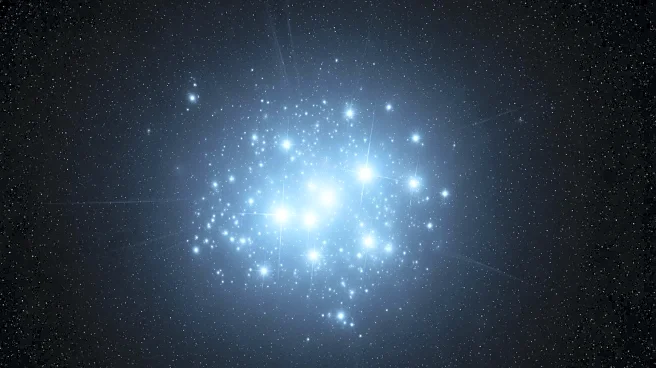What's Happening?
NASA is set to unveil the sharpest images yet of the interstellar object 3I/ATLAS, captured by the Mars Reconnaissance Orbiter's HiRISE camera. These images, delayed by a recent US government shutdown,
are expected to provide unprecedented detail of the object, which has sparked debate due to its unusual features, such as an 'anti-tail' pointing towards the Sun. The release of these images could offer new insights into the object's nature, moving the discussion from speculation to evidence-based analysis.
Why It's Important?
The high-resolution images of 3I/ATLAS could significantly advance our understanding of interstellar objects, which are rare visitors to our Solar System. By studying its core and features, scientists can determine whether it behaves like a typical comet or if it has an artificial origin. This research could impact theories about the formation and behavior of interstellar objects, contributing to our knowledge of cosmic phenomena and potentially challenging existing models.
What's Next?
Following the release of the images, 3I/ATLAS will continue its journey towards Jupiter, where it will be monitored by NASA's Juno spacecraft and ESA's JUICE mission. This extended observation period will allow scientists to track its progress and gather more data until it exits the Solar System in March. The upcoming image release is expected to narrow down possibilities regarding the object's nature, providing a clearer understanding of its composition and behavior.
Beyond the Headlines
The delay in releasing the images due to bureaucratic issues highlights the challenges faced by scientists in accessing timely data. This situation underscores the need for prioritizing scientific research over administrative hurdles, as timely data sharing is crucial for advancing our understanding of the universe.


